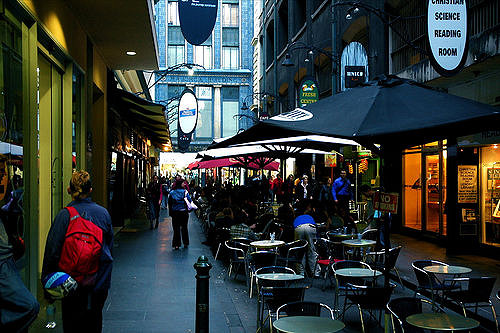This walking tour uncovered a sample of Melbourne’s laneway character. Melbourne’s persona is fondly captured by the revitalization of the city’s laneway network, and this walk visited several milestone precincts that have contributed to this regeneration, including new developments that provide active connections through their ground plane, as well as the emerging character of some of Melbourne’s forgotten laneways.
These public assets were discussed as they relate to the following topics: heritage, textures and materiality; public amenity; the confluence of people and cars; intuitive desire lines; and cognitive placemaking.
The Melbourne Planning Scheme (Clause 22.20., 29/01/2015) describes four characteristics that contribute to the success of laneways for pedestrians.
- Connectivity – The provision of a physical connection through a city block.
- Active frontages – Building frontages that provide for visual and physical interaction between the public space of the lane and the ground floors of the buildings.
- Elevational articulation – the architectural character of the buildings adjoining the lane and the degree to which this provides aesthetic and spatial interest to the public realm.
- Views – views from the lane’s public realm towards a connecting lane, street or landmark.


